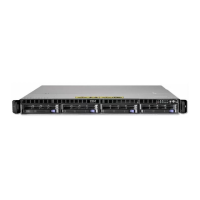Appendix C. Service Processor Setup and Test
For your convenience, an example of a basic service processor setup checklist is
included here. Your setup may include more or fewer of the available features, so you
can adjust this checklist for your own application so that it is helpful to you.
Service Processor Setup Checklist
1. Unplug the power cord from the server.
2. Attach a local terminal for this setup procedure.
3. Plug in the system and power on the local terminal.
Attention: Make sure that system power remains off.
4. Start the service processor menus. See Chapter 7, “Using the Service Processor”
on page 369.
5. Set the system name. See “Privileged User Menus” on page 372.
6. Enable surveillance. See “Service Processor Functions” on page 397.
7. Configure Call-In/Call-Out. See “Call-In/Call-Out Setup Menu” on page 391.
8. Exit the service processor menus.
9. Unplug the power cord from the system.
10. Attach modems (if needed). See “Accessing the Service Processor Menus
Remotely” on page 370.
11. Plug in the system.
Attention: Make sure that the system power remains off.
12. Test both of the following:
v Call-In, see “Testing Call-In” on page 498
v Call-Out, see “Testing Call-Out” on page 498
13. Use the “Save or Restore Hardware Management Policies,” in the “Introduction to
Tasks and Service Aids” section of the
RS/6000 and
Eserver
pSeries Diagnostics
Information for Multiple Bus Systems
to back up the service processor settings.
Note: This step is strongly recommended to protect the usefulness of the service
processor and the availability of the server.
Your service processor is now ready for use.
497

